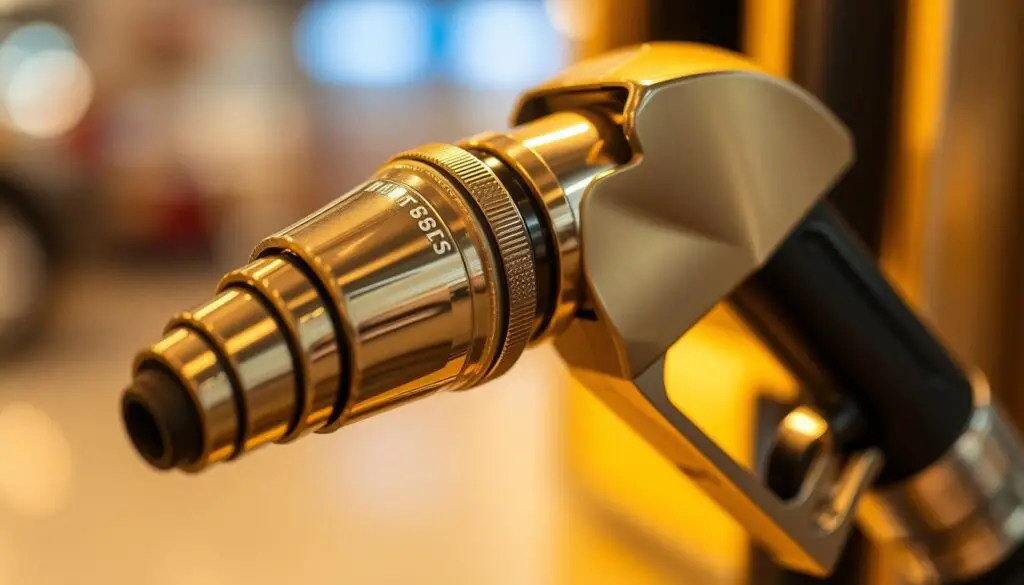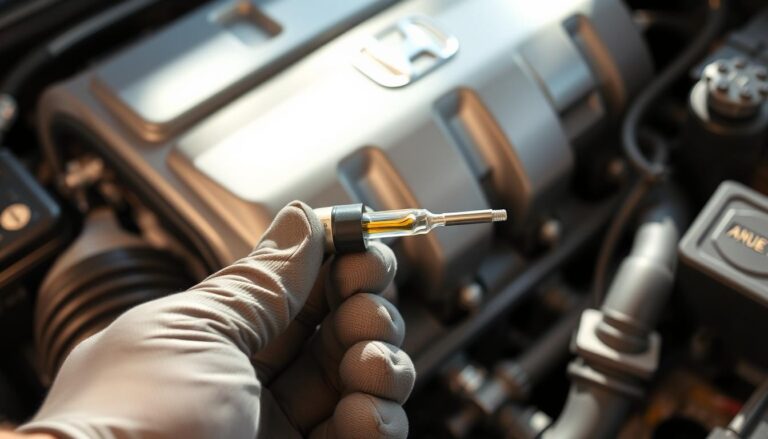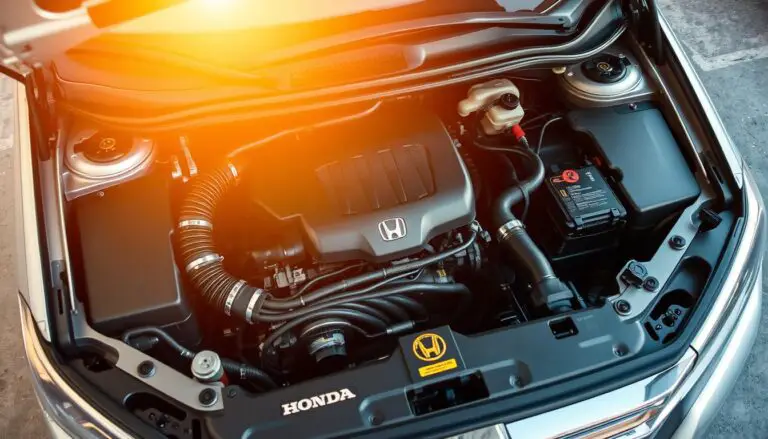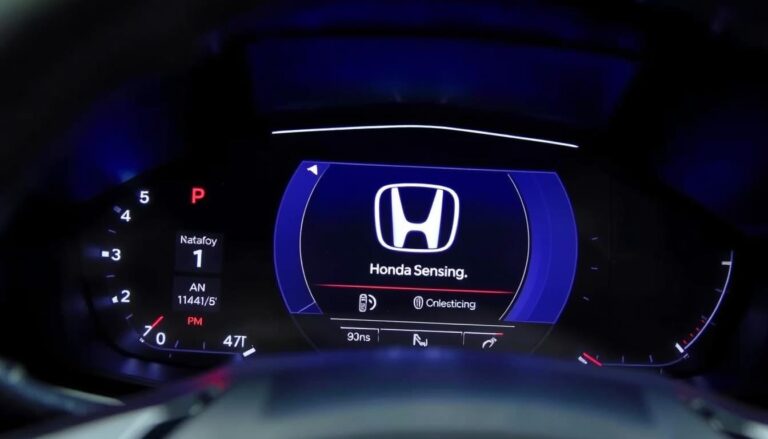This intro answers a core question U.S. owners ask: which pump grade to use, why it matters for the engine, and how to verify the right grade for your model and year.
In U.S. stations, gasoline uses AKI numbers (87/89/91–93). The vehicle manual and the gas cap are the first places to check. Both usually list the minimum and any preferred grade for better performance.
Recommendations can change by model year and engine. Regular unleaded meets needs for most naturally aspirated engines. Some trims tuned for higher cylinder pressure perform best on higher-octane fuel.
The point: choose fuel by balancing performance, longevity, and cost for your driving style. This guide will walk owners through quick checks, octane basics, model-based guidance, and practical tips to make a confident choice.
Key Takeaways
- Check the manual and gas cap first for each vehicle and model year.
- U.S. pumps show AKI numbers; know 87, 89, and 91–93.
- Most naturally aspirated engines run well on regular unleaded.
- Higher grades can improve performance and protect against knock in tuned engines.
- Balance cost, driving habits, and engine needs when selecting fuel.
Quick Answer and How to Choose the Right Fuel for Your Honda Civic
Start by checking the fuel cap label and your vehicle manual. The cap usually shows the minimum grade to use. Confirm that against the owner’s manual for your exact model year to avoid guesswork.

Step-by-step: Check gas cap, owner’s manual, and model year
- Read the gas cap for the minimum AKI number.
- Open the manual and verify recommended octane for your engine and year.
- Double-check online for your specific models and trims if unsure.
Quick rule of thumb: Minimum AKI 87 regular, premium recommended for performance-focused tunes
Direct answer: most U.S. Civics run fine on 87 AKI regular gas. If the manual or cap lists 91 as preferred, choose premium for better responsiveness and to preserve power margins.
- AKI on U.S. pumps is the octane number to match or exceed.
- Turbo and sport trims often show measurable gains with premium under heavy throttle.
- If you hear pinging or feel reduced acceleration, step up the grade and reassess power.
- Short on time? At minimum, use the grade printed on the cap as a safe baseline.
“Using a higher grade than required won’t harm the engine and may improve performance when the calibration supports it.”
Tip: Keep a simple log of fill-ups, grades, and any change in power. Over time that record shows what works best for your driving and conditions.
What Kind of Gas Does Honda Civic Take: Octane Basics Explained
International fuel labels can mislead drivers comparing numbers across countries. U.S. pumps list AKI (Anti-Knock Index). Many other places quote RON. That difference is why a “91” overseas can equal 87 AKI in the United States.

AKI vs RON: the labeling difference
Simple point: AKI blends RON and MON measures; RON alone reads higher. This labeling difference explains most forum confusion when people compare gasoline numbers across regions.
How octane prevents knock and timing pullback
Octane resists pre-ignition, so the engine can keep ideal spark timing under load. When lower octane leads to knock, the ECU’s knock sensors detect vibration and retard timing.
- Result: reduced power and worse fuel economy.
- Range: heavy loads, hot weather, and hard acceleration make octane more relevant.
- If you hear pinging or feel flat, try one grade up; many drivers report MPG recovery when moving from 87 AKI to 91 in cold conditions.
“Using higher octane than required won’t always add power, but it prevents knock and preserves the engine’s intended performance.”
For practical use, match the grade the manual or cap recommends. If the car still pings, step up one grade to restore timing and feel the difference. Click expand for more model-specific advice and tests.
By Engine and Trim: Regular vs Premium for Different Civic Models
Engine setup and trim level determine whether regular fuel will meet daily needs or if premium is worth the cost.
Baseline: naturally aspirated engines are calibrated to run on regular unleaded 87 AKI for everyday driving. That grade is safe and efficient for most commuting and light loads.
Naturally aspirated models
Practical point: Drivers of base trims typically see no measurable benefit from premium. Use 87 and log MPG and drivability to confirm.
Turbo and Si models
Performance trims with turbocharged engines or Si tuning gain the most from premium. Higher octane lets the ECU hold more spark advance under load, improving throttle response and power.
Aggressive ECU behavior and tunes
Modern ECUs adjust timing in real time to match octane. If octane is low, the tune pulls timing to prevent knock, which cuts power.
- Frequent hard acceleration or hot climates increase the benefit of premium for knock margin.
- Choosing premium reduces the chance of timing pull and helps maintain intended performance.
- Some models have maps that a higher octane or a performance tune can exploit for extra power.
“Using the recommended grade keeps the engine in its designed power band and reduces the risk of knock during hard driving.”
Tip: If undecided, test both grades over time. Log power feel, MPG, and drivability for a few tanks to see what fits your model and use.
Manual Says One Thing, Gas Cap Says Another: What to Do
Sometimes the book and the cap give different fuel guidance; here’s how to read both and decide what to use. Start by treating the label on the cap as a quick, model-specific note and the owners manual as the final reference.
When the manual recommends premium but the cap lists regular
Interpret the cap as the minimum. If the cap shows 87 minimum and the manual lists 91 as preferred, the vehicle will run on 87 but benefits from premium under load.
Why that matters: the engine control system reacts fast to octane. Lower grade often causes timing pullback and reduced throttle response.
Minimum vs recommended: Understanding “87 minimum” and “91 preferred” language
Minimum means safe operation; recommended signals the calibration target for peak performance and knock resistance.
- If you hear pinging, choose premium for immediate relief.
- For spirited driving, hot-weather runs, or heavy loads, follow the recommended grade.
- Log how the vehicle behaves on each grade to make data-driven choices over time.
“Recommended is not marketing fluff — it reflects the tune designers set to protect the engine across conditions.”
If labels remain ambiguous, ask a dealership service advisor to check guidance tied to your VIN or consult factory service info. For a quick VIN-based check, see this verification page: fuel octane guidance.
Elevation, Regional Octane, and Safety Considerations
Thin air at elevation reduces detonation risk, so some stations offer an 85 AKI option. In high-elevation areas, reduced air density lowers effective compression inside the cylinder. That change can let certain naturally aspirated engines run safely on lower octane while driving in the mountains.
High-altitude 85 AKI: when it might work—and when it won’t
Practical note: many Rocky Mountain pumps list 85 AKI because altitude reduces knock tendency. For base, naturally aspirated models this can be acceptable for local driving.
Be cautious: fuel that felt fine on a pass can cause knock when you descend to sea level. A lower octane that worked at elevation may force timing pullback in denser air.
- Turbo and tuned engines remain sensitive; use higher octane even at altitude.
- If a station’s range tops out at 91 AKI, plan fueling stops on long trips.
- Stick to at least the minimum unleaded grade in your manual and step up when towing or climbing steep grades.
“Monitor for pinging or sluggishness and switch to a higher grade when symptoms appear.”
Seasonal and regional gasoline blends also affect cold starts and detonation margins. Match octane to conditions, engine type, and load to protect the engine across varied places and trips. For quick checks, keep an ear out for knock and adapt your choice rather than locking into one grade everywhere. Click expand for model-specific travel tips.
Performance, Mileage, and Money: Finding Your Best Value
Real-world owners report small but measurable differences in efficiency and feel when they switch octane levels.
Real-world reports: MPG changes on 87 vs 91–93
Some people see a slight drop in mileage on 87 during cold months. Warmer conditions often reduce that gap and miles per gallon can recover on 91 or higher.
Power you can feel: timing pullback and knock
Lower octane can trigger knock sensors and force timing pullback. Drivers may notice reduced throttle response and less power under load.
Cost math: small per-tank savings vs long-term trade-offs
Premium costs a few cents more per gallon, but better MPG and preserved engine timing can offset that over miles and time.
- Log miles and MPG for two or three tanks on each grade to compare real cost per mile.
- If audible knock appears on 87, choose premium despite the short-term money saved.
- Short trips and extreme temps often widen the MPG difference between grades.
“The best value balances miles, performance feel, and long-term protection rather than chasing the lowest price per gallon.”
| Scenario | Typical MPG Change | When to Pick Premium |
|---|---|---|
| Cold city driving | -0.5 to -1.5 mpg on 87 | Frequent short trips or noticed knock |
| Highway cruising | 0 to +0.5 mpg on 91 | Long trips, towing, sustained loads |
| Performance driving | 0 to +2 mpg possible | Sport trims, turbo use, heavy throttle |
Fuel Quality Matters: Top Tier Gasoline vs Octane Rating
Fuel quality often matters just as much as octane when it comes to long-term engine health. Choosing a known, high-quality supply can help the car run clean and consistent over years of use.
Why detergent packages can matter as much as the grade you choose
Top Tier gasoline emphasizes detergent additives designed to keep intake valves and injectors cleaner. That cleanliness reduces deposit-related issues that hurt drivability.
Detergents do different work than octane. Octane manages knock tolerance; detergent packages preserve flow and spray patterns inside the engine.
- Using Top Tier gas can improve long-term performance consistency, even if you stick to the same grade.
- Many owners and guys on forums report smoother idle and fewer drivability issues after switching to consistent Top Tier supplies.
- You don’t need the priciest brand—pick a station with verified Top Tier certification and the correct grade for your car.
“Investing in cleaner fuel is a low-effort way to protect the engine and sustain performance beyond just picking a grade.”
Tip: For sport driving, combine the recommended octane with Top Tier gasoline to help maintain consistent power over longer intervals. If you suspect past poor-quality gas caused deposits, review maintenance and consider a professional intake service.
Conclusion
Final fuel choices should balance daily driving needs, budget, and engine protection. For most owners, regular unleaded 87 AKI is safe; choose premium for turbo or sport trims and when you want peak performance.
Match the grade on the cap and the owners manual, then listen for knock. If the car pings or feels sluggish, step up one grade and retest for better response.
Track one or two tanks: log miles, MPG, and cost per gallon to see if premium pays off. Use Top Tier stations when possible and avoid testing by mixing grades in the same tank.
Regional notes matter: 85 AKI at high altitude can work for some naturally aspirated engines, but avoid that lower octane at sea level. Thanks for reading—small choices at the pump protect the motor and improve daily drive feel.
FAQ
What fuel grade should I use for my Civic?
Check your owner’s manual first. Most naturally aspirated Civics are designed to run on regular unleaded with an AKI of 87. Turbocharged models, the Si, and any factory-performance trims typically recommend or require premium (91–93 AKI) for optimal power and knock protection.
How do I quickly confirm the right fuel at the pump?
Inspect the fuel filler cap and the label inside the fuel door, then verify with the owner’s manual. If labels conflict, follow the manual or dealer guidance; the manual reflects engine tuning and warranty requirements.
Why do octane numbers differ between countries (AKI vs RON)?
The U.S. uses AKI (Anti-Knock Index), roughly the average of RON and MON. Overseas RON numbers appear higher; for example, 91 RON abroad can be close to 87 AKI in the U.S. Always compare using the correct scale for your market.
What does octane actually do for the engine?
Octane resists pre-ignition and detonation. Higher octane lets the engine run more aggressive timing without knock. Using lower octane can cause timing retard, reduced power, and in severe cases, persistent knock that risks damage.
My manual says premium but the gas cap lists regular — what should I do?
Prioritize the owner’s manual; it reflects the engine calibration. The cap or station sticker may be generic. If in doubt, contact a Honda dealer for your model and year to confirm fuel requirements.
Can I use lower octane at high elevation?
Many regions at higher altitude allow lower AKI (sometimes 85). Engines tuned for those altitudes can accept it, but follow the manual and watch for knock. If the car was tuned for sea level, stick to the recommended octane.
Will premium fuel improve my Civic’s mileage?
Most drivers see negligible MPG gains. Turbo or tuned engines may benefit from premium with slight efficiency or power improvements, but regular engines rarely gain enough to justify the extra cost per tank.
How noticeable is the power difference between 87 and 91–93?
On turbocharged or performance models, the difference can be felt as quicker throttle response and higher sustained power due to less timing pullback. On standard engines, changes are usually minor and often not perceptible in daily driving.
Are Top Tier gasolines worth choosing?
Yes. Top Tier fuels contain stronger detergent packages that help keep injectors, valves, and combustion chambers cleaner. That maintenance benefit can matter as much as the chosen octane in long-term engine health and consistent mileage.
What if I accidentally fill with lower octane than recommended?
If you briefly run lower octane, drive gently and refuel with the correct grade soon. Modern ECUs will retard timing to protect the engine. Persistent use of undergrade fuel, especially in turbo engines, risks reduced performance and possible damage over time.
Do aftermarket tunes change the required fuel grade?
Yes. Many performance tunes increase boost or advance timing and therefore require higher-octane fuel to prevent knock. Always check tuner recommendations and use the specified octane to protect the motor and maintain reliability.
How should I weigh cost versus benefit when choosing fuel?
Calculate per-tank cost differences and factor in real-world MPG changes and performance needs. If you own a turbo or Si and want sustained performance, premium is usually worth it. For everyday commuting in a naturally aspirated Civic, regular often provides the best value.


